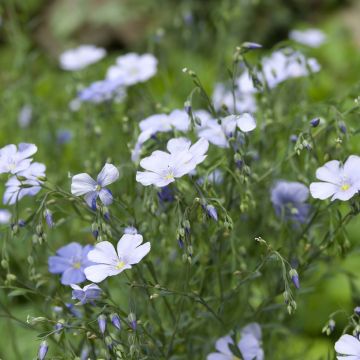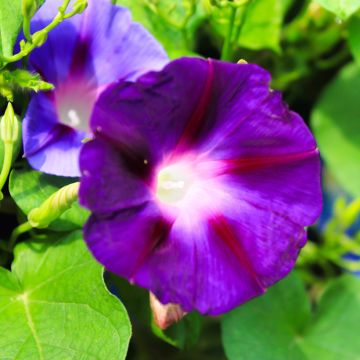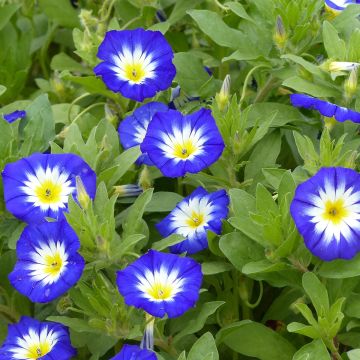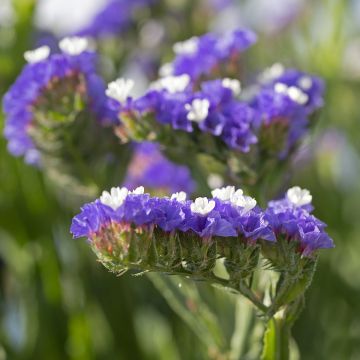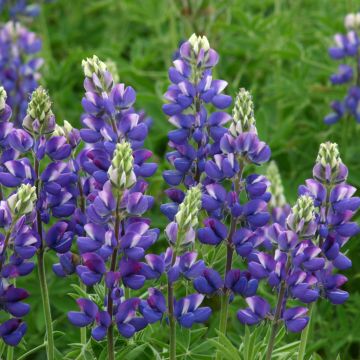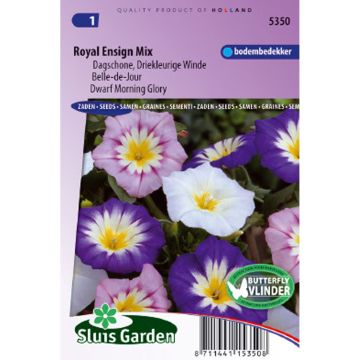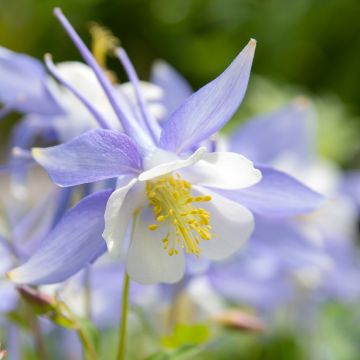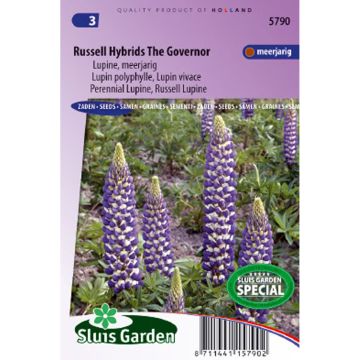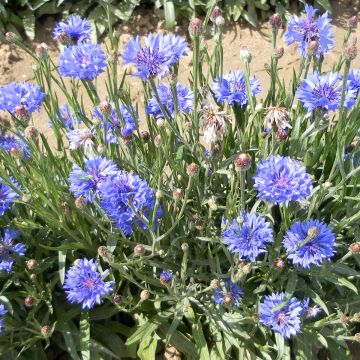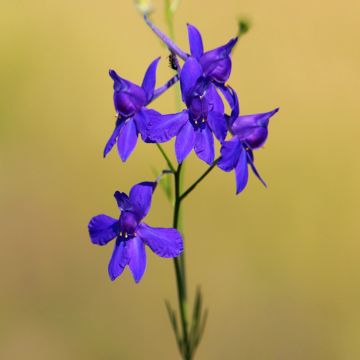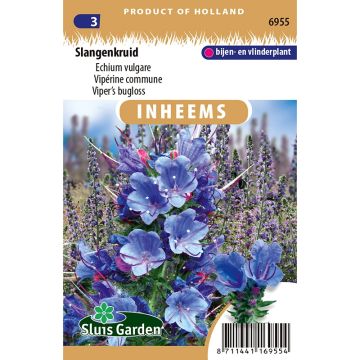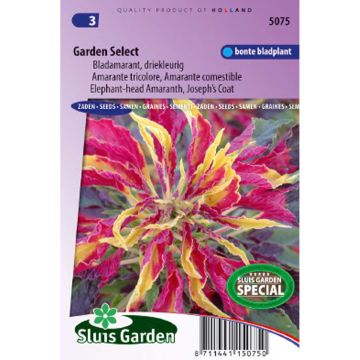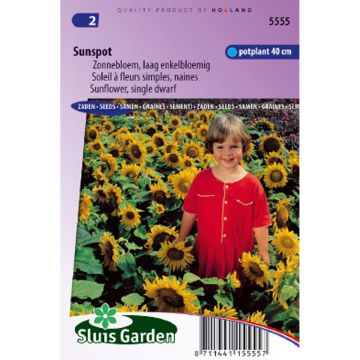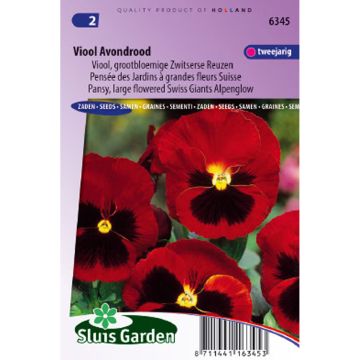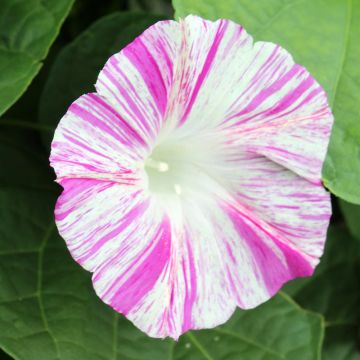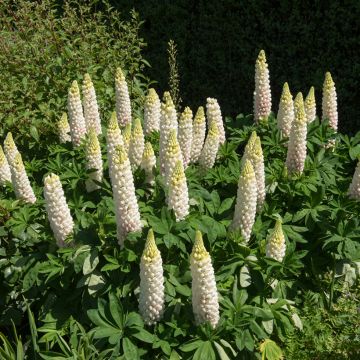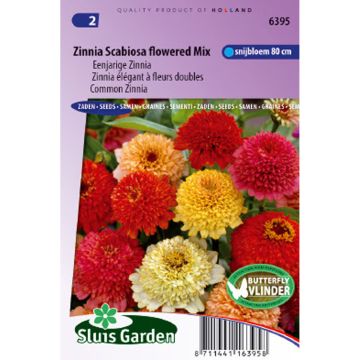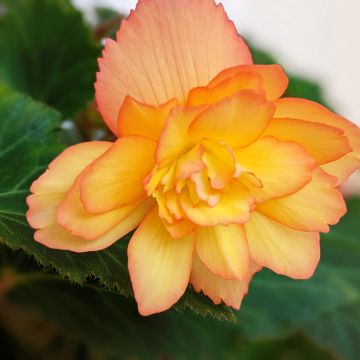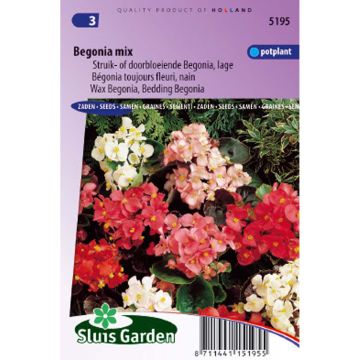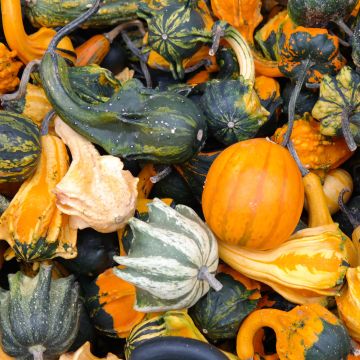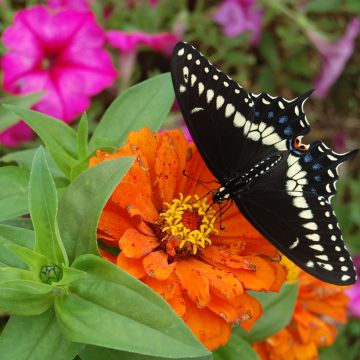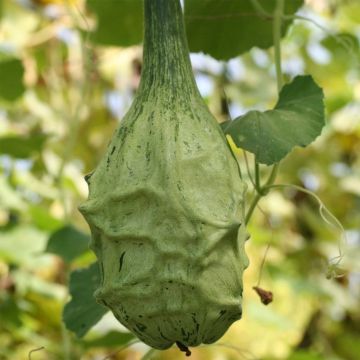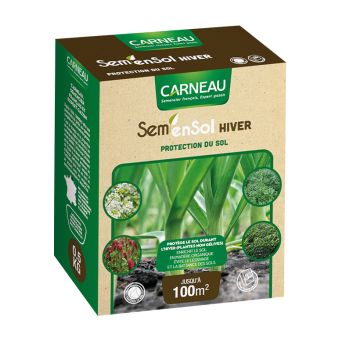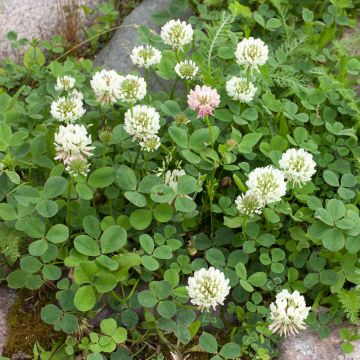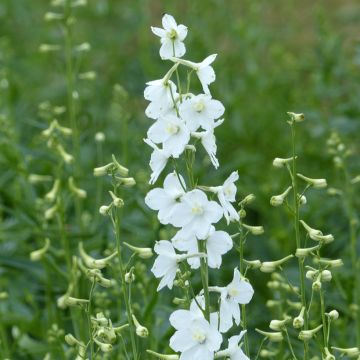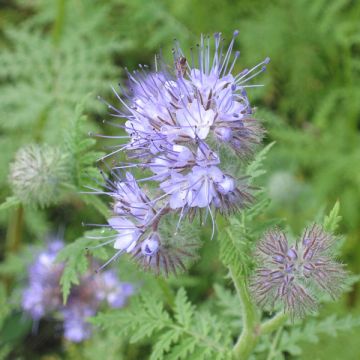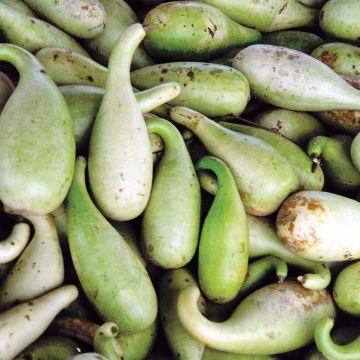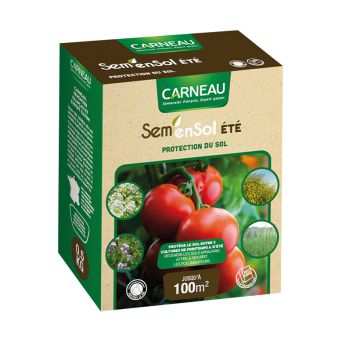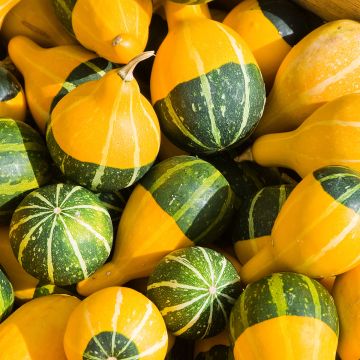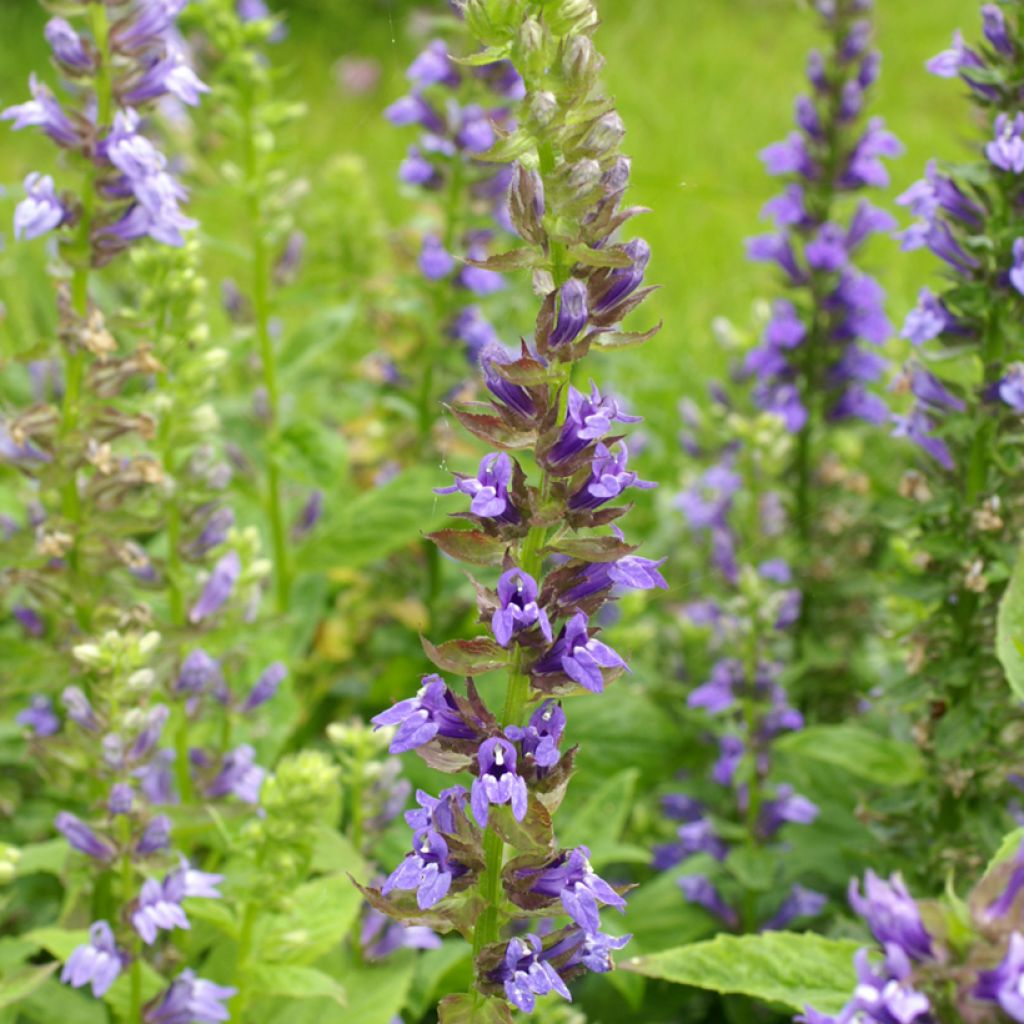

Lobelia siphilitica Clear Blue - seeds
Lobelia siphilitica Clear Blue - seeds
Lobelia siphilitica Clear Blue
Why not try an alternative variety in stock?
View all →This plant carries a 6 months recovery warranty
More information
We guarantee the quality of our plants for a full growing cycle, and will replace at our expense any plant that fails to recover under normal climatic and planting conditions.
Seed-only orders are dispatched by sealed envelope. The delivery charge for seed-only orders is €3.90.
Does this plant fit my garden?
Set up your Plantfit profile →
Description
Lobelia siphilitaca 'Clear Blue' is a form of syphilitic lobelia or giant lobelia selected for its light blue, fresh, and bright flowers. It is a charming, floriferous perennial that thrives in moist to wet soil, sought after by pollinators. Its upright stems bear tall flower spikes from summer to early autumn. This giant lobelia appreciates sunny, non-scorching exposures, as well as not too dense shade. It is a perfect plant for flowering a light and humid understory or the edges of a natural pond.
The 'Clear Blue' syphilitic lobelia is a tall, upright perennial native to North America. It has a fairly fast growth and can reach 60 to 90 cm in height with a spread of 30 cm per stem. It first forms a rosette of large leaves just above the ground, then leafy stems. Its leaves are green, lanceolate and alternate along the stem. Large at the base of the stem, the leaves become smaller as they approach the floral spike. Flowering extends from July-August to October in the form of flower spikes at the top of the stems. The flowers bloom progressively along the spikes. The light blue flowers of this 'Clear Blue' variety have a trumpet shape ending in two cut and outward-curving lips. This perennial tends to be short-lived but self-seeds without becoming invasive if the conditions suit it. Its above-ground, deciduous vegetation dries up in autumn and regrows in spring.
The 'Clear Blue' syphilitic lobelia is hardy (-20°C). Plant this wildflower in large groups of 10 to 20 plants to showcase it best. It thrives in heavy, ordinary, moist to wet soils and tolerates short periods of root submersion. It enjoys sunny exposures with moist soil, as well as shaded exposures in soil that remains simply moist in summer. It is ideal in water gardens, in pond-edge beds, and in understories. Pair it with tall phlox, its brilliant cousin Lobelia cardinalis, Goat's Beard, Rodgersias, and the royal fern.
Attention, seeds suitable for experienced gardeners accustomed to sowing very fine seeds. These seeds are as fine as dust, barely visible to the naked eye.
Report an error about the product description
Flowering
Foliage
Plant habit
Botanical data
Lobelia
siphilitica
Clear Blue
Campanulaceae
North America
Other Flower seeds A to Z
Planting and care
Sowing:
Sow indoors from January to April. It is preferable to sow early in the year. Sow thinly on the surface of a special sowing compost kept slightly moist. Mixing the seeds with fine sand allows for a more uniform sowing of very fine seeds. The seeds need cold to germinate: place your sowing tray at 4°C for 2 weeks, then move it to a warm place at a temperature of 18-20°C. Germination takes 15 to 20 days. Transplant the plants when they are large enough to handle into 8 cm pots. Acclimate them gradually to the outdoors (in light shade) and plant them in the garden once the risk of frost has passed. Maintain a spacing of 45 cm between each plant.
Cultivation:
Lobelia syphilitica prefers moist and rich soil, preferably acidic to neutral (non-limestone), clayey and/or humus-bearing. It thrives in non-scorching sun or partial shade. Light shade will enhance the intensity of the flower colour. Ensure that the soil remains moist until the plant is well established. Mulch the soil in summer to conserve moisture. Water if necessary during hot and dry weather. If you allow the plants to produce seeds, you can harvest them in late summer to sow them wherever you like. Spontaneous seedlings are not uncommon, but this plant is never invasive. Moreover, young misplaced plants are very easy to remove.
Sowing period
Intended location
This item has not been reviewed yet - be the first to leave a review about it.
Flower seeds
Haven't found what you were looking for?
Hardiness is the lowest winter temperature a plant can endure without suffering serious damage or even dying. However, hardiness is affected by location (a sheltered area, such as a patio), protection (winter cover) and soil type (hardiness is improved by well-drained soil).

Photo Sharing Terms & Conditions
In order to encourage gardeners to interact and share their experiences, Promesse de fleurs offers various media enabling content to be uploaded onto its Site - in particular via the ‘Photo sharing’ module.
The User agrees to refrain from:
- Posting any content that is illegal, prejudicial, insulting, racist, inciteful to hatred, revisionist, contrary to public decency, that infringes on privacy or on the privacy rights of third parties, in particular the publicity rights of persons and goods, intellectual property rights, or the right to privacy.
- Submitting content on behalf of a third party;
- Impersonate the identity of a third party and/or publish any personal information about a third party;
In general, the User undertakes to refrain from any unethical behaviour.
All Content (in particular text, comments, files, images, photos, videos, creative works, etc.), which may be subject to property or intellectual property rights, image or other private rights, shall remain the property of the User, subject to the limited rights granted by the terms of the licence granted by Promesse de fleurs as stated below. Users are at liberty to publish or not to publish such Content on the Site, notably via the ‘Photo Sharing’ facility, and accept that this Content shall be made public and freely accessible, notably on the Internet.
Users further acknowledge, undertake to have ,and guarantee that they hold all necessary rights and permissions to publish such material on the Site, in particular with regard to the legislation in force pertaining to any privacy, property, intellectual property, image, or contractual rights, or rights of any other nature. By publishing such Content on the Site, Users acknowledge accepting full liability as publishers of the Content within the meaning of the law, and grant Promesse de fleurs, free of charge, an inclusive, worldwide licence for the said Content for the entire duration of its publication, including all reproduction, representation, up/downloading, displaying, performing, transmission, and storage rights.
Users also grant permission for their name to be linked to the Content and accept that this link may not always be made available.
By engaging in posting material, Users consent to their Content becoming automatically accessible on the Internet, in particular on other sites and/or blogs and/or web pages of the Promesse de fleurs site, including in particular social pages and the Promesse de fleurs catalogue.
Users may secure the removal of entrusted content free of charge by issuing a simple request via our contact form.
The flowering period indicated on our website applies to countries and regions located in USDA zone 8 (France, the United Kingdom, Ireland, the Netherlands, etc.)
It will vary according to where you live:
- In zones 9 to 10 (Italy, Spain, Greece, etc.), flowering will occur about 2 to 4 weeks earlier.
- In zones 6 to 7 (Germany, Poland, Slovenia, and lower mountainous regions), flowering will be delayed by 2 to 3 weeks.
- In zone 5 (Central Europe, Scandinavia), blooming will be delayed by 3 to 5 weeks.
In temperate climates, pruning of spring-flowering shrubs (forsythia, spireas, etc.) should be done just after flowering.
Pruning of summer-flowering shrubs (Indian Lilac, Perovskia, etc.) can be done in winter or spring.
In cold regions as well as with frost-sensitive plants, avoid pruning too early when severe frosts may still occur.
The planting period indicated on our website applies to countries and regions located in USDA zone 8 (France, United Kingdom, Ireland, Netherlands).
It will vary according to where you live:
- In Mediterranean zones (Marseille, Madrid, Milan, etc.), autumn and winter are the best planting periods.
- In continental zones (Strasbourg, Munich, Vienna, etc.), delay planting by 2 to 3 weeks in spring and bring it forward by 2 to 4 weeks in autumn.
- In mountainous regions (the Alps, Pyrenees, Carpathians, etc.), it is best to plant in late spring (May-June) or late summer (August-September).
The harvesting period indicated on our website applies to countries and regions in USDA zone 8 (France, England, Ireland, the Netherlands).
In colder areas (Scandinavia, Poland, Austria...) fruit and vegetable harvests are likely to be delayed by 3-4 weeks.
In warmer areas (Italy, Spain, Greece, etc.), harvesting will probably take place earlier, depending on weather conditions.
The sowing periods indicated on our website apply to countries and regions within USDA Zone 8 (France, UK, Ireland, Netherlands).
In colder areas (Scandinavia, Poland, Austria...), delay any outdoor sowing by 3-4 weeks, or sow under glass.
In warmer climes (Italy, Spain, Greece, etc.), bring outdoor sowing forward by a few weeks.

































